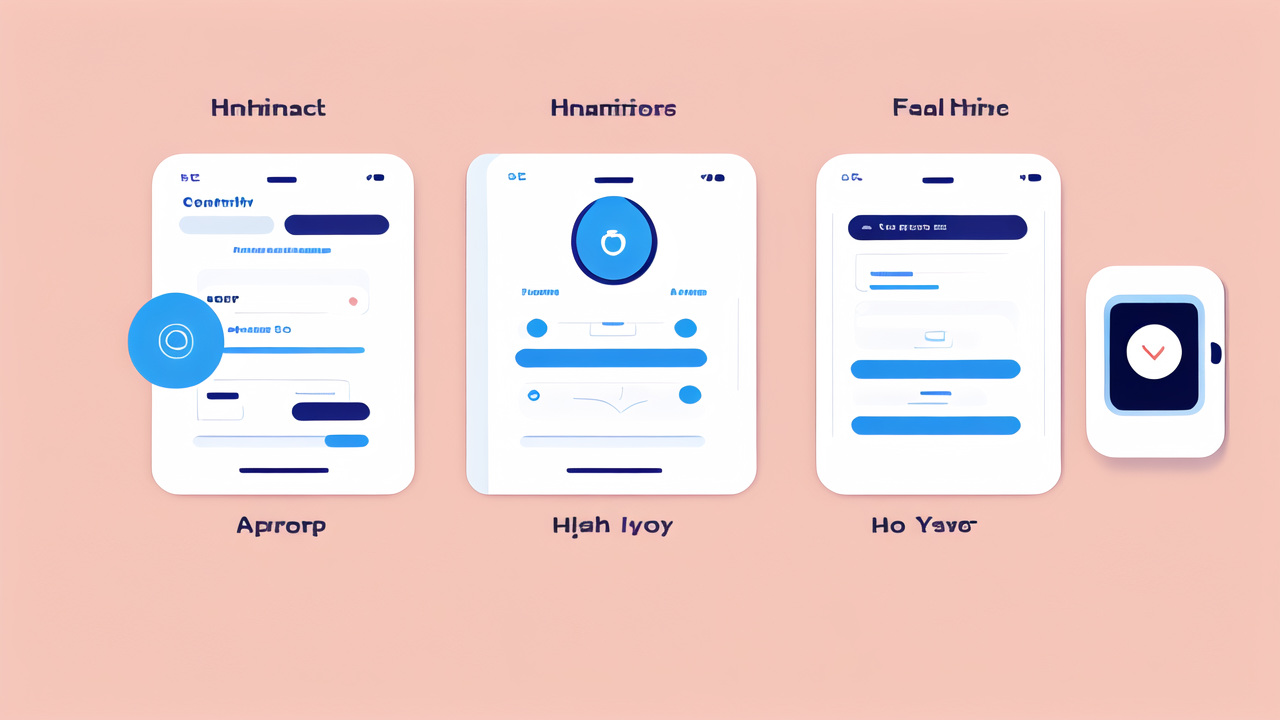Understanding Health Monitor Devices: An Overview
The Evolution of Wearable Health Technology
Wearable health technology has come a long way. It started with simple step counters. Now, we have smart watches that do much more. These devices can track heart rate, sleep patterns, and even stress levels.

The first wearables were bulky and had limited features. Today's devices are sleek and packed with sensors. They offer real-time data and insights. This evolution has made health tracking more accessible to everyone.
Wearables now connect to smartphones and cloud services. This allows for better data analysis and sharing with healthcare providers. The journey from basic trackers to advanced health monitors has been rapid and exciting.
Key Features of Modern Health Monitors
Modern health monitors offer a wide range of features:
- Heart rate tracking
- Sleep analysis
- Step counting
- Calorie burn estimation
- Stress level monitoring
- Blood oxygen level measurement
- ECG capabilities
These devices use advanced sensors to collect data. They provide users with detailed health insights. Many can send alerts for irregular heart rhythms or high stress levels.
Some monitors can track specific health conditions. For example, some watches can detect falls in older adults. Others can monitor blood glucose levels for diabetics.
The Legal Landscape of Health Wearables in the United States
The legal framework for health wearables in the US is still evolving. The FDA has created guidelines for these devices. They classify some as medical devices, depending on their features.
Privacy is a major concern. Laws like HIPAA protect health data. But not all wearables fall under these laws. Companies must be clear about how they use and protect user data.
There are also concerns about accuracy. The FDA is working on standards for wearable health devices. This will help ensure that consumers can trust the data they receive.
The Impact of Health Monitors on Consumer Behavior
Enhancing Personal Health Management with Wearable Technology
Wearable health monitors have changed how people manage their health. These devices give users constant access to their health data. This leads to more informed decisions about diet, exercise, and sleep.

Users can set goals and track their progress easily. For example, they can monitor their daily step count or calorie intake. This real-time feedback motivates many to stay active and make healthier choices.
Some monitors can detect early signs of health issues. This allows users to seek medical help sooner. It's like having a personal health assistant always on hand.
How Health Monitors Drive Lifestyle Changes
Health monitors have a significant impact on lifestyle choices. When people see their health data, they often feel motivated to improve. Here are some common changes:
- Increased physical activity
- Better sleep habits
- More balanced diets
- Stress reduction efforts
- Regular health check-ups
These devices make health goals more tangible. Users can see how small changes affect their overall health. This visual feedback is a powerful motivator for many.
Some monitors offer challenges or rewards. These gamification features make health improvement fun and engaging.
The Role of Health Monitors in Achieving Wellness Goals
Health monitors play a crucial role in helping people reach their wellness goals. They provide a clear picture of current health status. This helps users set realistic and achievable goals.
These devices offer personalized insights. They can suggest improvements based on individual data. For example, a monitor might recommend more sleep if it detects fatigue patterns.
Many health monitors integrate with wellness apps. This creates a comprehensive health management system. Users can track their progress, get tips, and stay motivated all in one place.
Technological Innovations in Health Monitoring
Advancements in Sensor Technology for Health Wearables
Sensor technology in health wearables is rapidly advancing. New sensors can measure more health metrics with greater accuracy. Some recent innovations include:

- Continuous glucose monitoring without needles
- Sweat analysis for hydration and electrolyte balance
- Advanced heart rate variability measurements
- Skin temperature sensors for fertility tracking
These sensors are becoming smaller and more energy-efficient. This allows for longer battery life and more comfortable wear. Some new sensors can even detect air quality or UV exposure.
Researchers are working on sensors that can detect specific diseases. For example, some are developing sensors to detect early signs of Alzheimer's or Parkinson's disease.
Interoperability and Integration of Health Monitor Systems
Interoperability is a key focus in health monitor development. Devices now can share data with each other and with healthcare systems. This creates a more complete picture of a person's health.
Many health monitors can now sync with electronic health records (EHRs). This allows doctors to access real-time patient data. It can lead to more informed treatment decisions.
Some platforms allow users to combine data from multiple devices. For example, a person might use a smartwatch, a smart scale, and a blood pressure monitor. All this data can be viewed in one app.
Future Trends in Health Wearable Technology
The future of health wearables looks exciting. Here are some trends to watch:
- AI-powered health insights
- Non-invasive blood glucose monitoring
- Emotion and mental health tracking
- Personalized health recommendations
- Integration with smart home systems
Wearables may soon be able to predict health issues before they occur. This could revolutionize preventive healthcare. Some companies are working on implantable health monitors for even more accurate data.
The line between consumer devices and medical devices is blurring. Future wearables might be able to diagnose conditions and suggest treatments. This could change how we interact with healthcare systems.
As technology advances, health monitors will become more personalized and powerful. They will play an increasingly important role in our health and wellness journeys.




Leave a comment
This site is protected by hCaptcha and the hCaptcha Privacy Policy and Terms of Service apply.